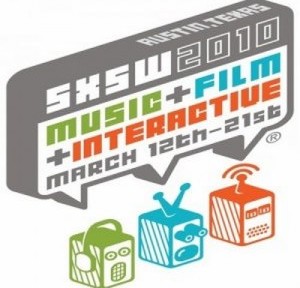Usually every couple of weeks you will see articles cycling through Twitter with leads like “Gen Y flocks to Twitter as Facebook Ages” or some impressive stat about just how “old” social media users really are. It is interesting that the dominant age group on the social web is 35-44 year olds and not teens or the 20-30 year old crowd. Social network use is moving beyond connecting with long lost friends from elementary school and we are starting to hear more and more success stories about people leveraging their networks to land jobs, make powerful connections with industry leaders, or maybe even celebrities.
 While these statistics and user case studies are important for understanding who is using social networks and how, I’m not sure they help us to truly understand why users are drawn to the social web in the first place. When we connect online we may have specific objectives in mind, but more than likely we are looking to extend our real-world realities to the online realm in a way that has little to do with age or even work. Instead, the focus shifts to interests, common experiences, and the search for useful information that will educate us in our offline lives.
While these statistics and user case studies are important for understanding who is using social networks and how, I’m not sure they help us to truly understand why users are drawn to the social web in the first place. When we connect online we may have specific objectives in mind, but more than likely we are looking to extend our real-world realities to the online realm in a way that has little to do with age or even work. Instead, the focus shifts to interests, common experiences, and the search for useful information that will educate us in our offline lives.
I had the amazing opportunity to see Paul McCartney live at SunLife Stadium on Saturday, April 3 and not only was I amazed by his out this world performance, I was amazed at the mish-mash of people there for the show. As I entered the stadium I was sure I would be the youngest person in the crowd, but I was wrong. Middle school aged kids were buzzing with just as much excitement as I was as they rushed into the stadium with their friends, or even their parents. Throughout the show I was amazed by the interactions taking place in the crowd. Children were dancing with grandparents, young 20-something couples were singing along to every song, and no one seemed to think this was unusual. Why? Well, because it’s not. Our offline lives bring us in contact with people from all over the world and all along the age spectrum. We relate to each other based on common interests, whether that is a love for Paul McCartney’s artistic abilities or an appreciation for technology.
Social network users care less about the age of the people they are interacting with and more about what they have in common with them. College-aged users don’t flock from Facebook because they’re annoyed by a friend request from their mom, but because Facebook, and many brands who try to leverage the space, have done a poor job connecting people who have real things in common outside of their age, location, and past. Most Fan Pages are little more than a stream for a brand’s website and PR content. There is no way to easily search through the other fans of that product, place, or person to see who you might be able to connect with in a real way outside the random comments or clicks of the “like” button.
As social networks mature, niche networks become more popular, and social media users become more vocal about what they want from these platforms, profiles will be less about where you have been (age and school) and more about who you are now and what experiences you are searching for (books you’re reading now, places you want to travel to).
A great example of this is Get Glue, a social networking site that rewards you for “liking” movies, books, artists, restaurants, wines and more. The idea is that the website can recommend products for you based on what you have experienced in the past so that you can have new experiences. The best part is you can see what the people in your network like and what they have consumed, giving you a more intimate look into who that person is beyond their 140 character bio on Twitter or Facebook profile that probably hasn’t been updated in the last year. This sneak peak could lead to the meaningful online and offline connections that users are searching for.
When social networks really make the jump to creating rich online experiences that are inspired by your offline life, statistics will be less about age groups and more about cultural movements, online connections that led to offline interactions, and the creation of innovative user content that bridges age and location.



